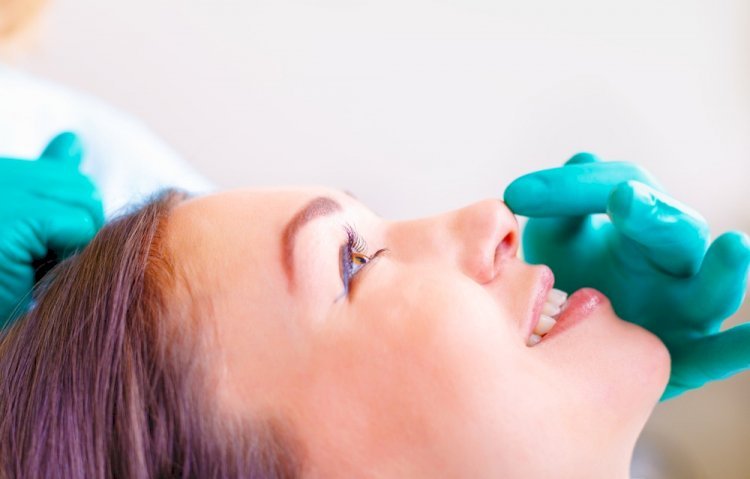Rhinoplasty

One of these organs is the nose. Nose is a very important organ in the middle of the face, in terms of appearance and respiration. Initiatives towards this area should be well planned and graceful in every aspect. Otherwise, there is a risk of obtaining a very ugly aesthetic appearance. With aesthetic nose surgery, the size of the nose can be reduced, hump can be removed, the shape of the nose can be changed, the nostrils can be narrowed, the angle between the upper lip and the nose can be changed. This surgery can help correct birth defects, nose injuries and some respiratory problems. Rhinoplasty is a separate area of plastic surgery to correct congenital or acquired nose defects. Rhinoplasty can be recommended by a doctor in cases where there are congenital or post-traumatic deformities of the nose, there is a violation of nasal breathing.
Aesthetic indications for rhinoplasty are:
- saddle-shaped nose;
- a hump on the back of the nose;
- hooked tip of nose;
- too pointed or thickened tip of the nose;
- excessive length of nose;
- asymmetry of the wings of the nose;
- enlarged nostrils.
The presence of nose defects is determined by the surgeon with the help of special measurements, the results of which are compared with the average indicators. Rhinoplasty is done only for adults, because at the time of surgery the body must be fully formed. Contraindications to rhinoplasty are: diseases of the cardiovascular system, liver and kidneys; diabetes; mental and oncological diseases; bleeding disorder. It is not recommended to perform surgery for people over 40 years old, whose ability to regenerate tissues is significantly reduced.
Types of rhinoplasty:
– There are many varieties of rhinoplasty, each of which is designed to solve a specific problem and can affect different types of tissues.
– The plasty of the base of the nose is aimed at reducing the width of the nostrils. After the operation, there may be unobtrusive scars in the base of the nose. The operation is performed both for aesthetic – indications and for the purpose of reducing the possible edema of the nose after another operation in this area. Often patients are representatives of the Negroid and Mongoloid races.
– Plastics of the tip of the nose. The most complex form of rhinoplasty, which can dramatically change the appearance of the patient, but requires a huge experience from the surgeon. Corrects hookness, upturn, axis shift and other external defects of the tip of the nose.
– Correction of columella. Columella is the cutaneous part of the septum of the nose, in fact it is a jumper between the nostrils. It can be too wide or too narrow, retracted or protruding. Correct the defect with the help of operational correction. Correction of the shape of the nose. Making the nose of the right shape – smoothing of the hump, alignment of the axis. It affects bone and cartilaginous tissues.
– Contour plastic nose. Non-surgical method of correction of small external defects of the nose due to injections of hyaluronic acid.
– Septorhinoplasty. Correction of curvature of the nasal septum with the aim of facilitating nasal breathing, solving the problem of snoring.
– Conchotomy (including laser). Partial or complete removal of hypertrophic mucous membrane of nasal concha in case of problems with nasal breathing.
– Electrocoagulation. Gentle influence of electric current on the nasal mucosa in cases of slight hypertrophy of nasal concha.
– Augmentation rhinoplasty. This kind of rhinoplasty is aimed at correcting nose defects due to the increase in the size of the nasal skeleton (usually used in cases of secondary rhinoplasty).
– Grafting. Transplantation of the patient’s own cartilage to create the necessary shape of the nose. Cartilaginous tissue can be taken from the nasal septum, auricle or rib.
– Laser rhinoplasty. As a tool, a laser is used instead of a scalpel, which makes the operation less traumatic.
– Reconstructive rhinoplasty. Required to correct the results of previous operations.
– Non-surgical rhinoplasty. Modeling the shape of the nose with dense gels – filers.
According to the details explained to you before the surgery, operation time is usually 1.5-2 hours under general anesthesia. Procedure is performed in full-fledged hospital conditions and the patient is hospitalized for 1 night after surgery. After a few days patients may return to their daily life. After 2 weeks the plaster is removed. It can take up to 6 months to get the final shape of the nose, but changes are made even in the early stages.
During anesthetic nasal surgery, if the patient has anatomical problems like septum deviation or turbinates which prevent healthy breathing in the nose can be corrected.
Currently, there are two methods of surgical intervention to correct the shape of the nose: open and closed. The open method assumes an incision on the dermal part of the nasal septum about 5 mm wide in order to improve the visualization of the nasal skeleton for further manipulation. It is used in complex operations, when full visual control over all stages of rhinoplasty is necessary. Allows easy removal and movement of cartilage. The closed method uses the possibility of performing surgical manipulations through incisions in the nostrils, which are subsequently not visible.